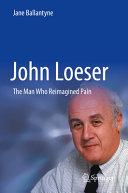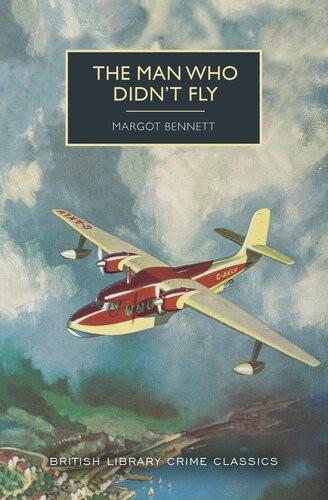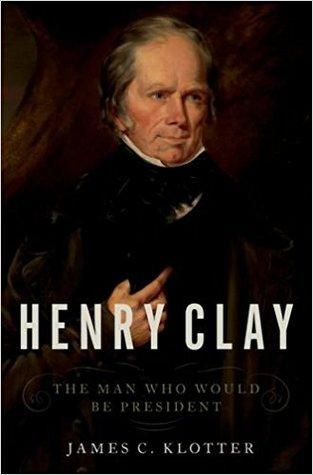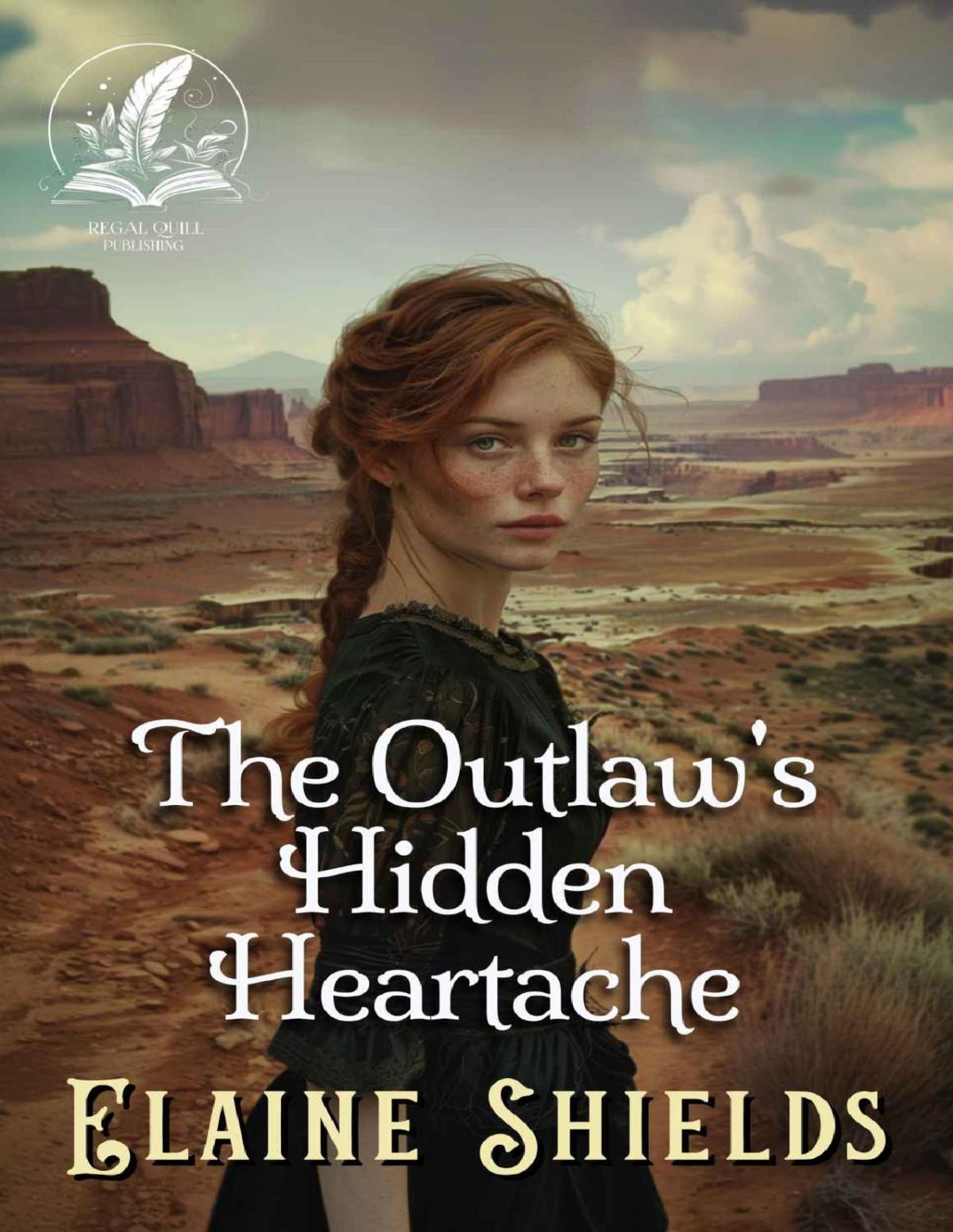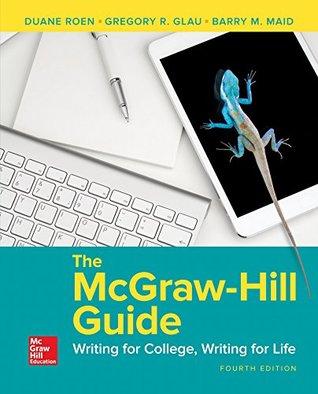Introduction
Driving slowly down North Woolsey Avenue in Fayetteville, Arkansas, hunting for an address, Anne Marie Candido had no idea what kind of house she was looking for. John Williams, she had been given to understand, was a novelist and former professor at the University of Denver. He’d moved to Fayetteville for his health—the lower altitude was easier on his breathing. A friendship between him and John Harrison, dean of the libraries at the University of Arkansas, had led to Williams agreeing to donate his papers to the university’s special collections.
But that had been a year ago, in 1987, and all of Williams’ materials were still awaiting disposition in cardboard boxes at the library. When Candido, a PhD in literature, heard there was grant money available to hire someone to organize the collection, she applied for the position—anything to do with books and manuscripts sounded interesting.
She hadn’t read any of Williams’ novels, though. She wondered whether she should have before coming over to his house. Maybe it was presumptuous or discourteous to arrive without having done
her homework. Her husband, a professor of English, was a fan of Williams’, and he had been glad to praise him: Williams’ novels were outstanding—especially Stoner, about a Missouri farm boy who becomes a professor. Williams was from Texas during the Depression, so it could be autobiographical. He won the National Book Award for Augustus, a fictional life of the Roman emperor. But the committee split the fiction award between him and John Barth that year—the first time it had ever happened in that category. Some said Williams got half as a kind of consolation prize for the committee having ignored Stoner ten years earlier. And there was one other novel, too, which was about buffalo hunting—Butcher’s Crossing, published early in his career. Too bad his books were out of print, but they had just never caught on for some reason.
Candido slowed down to see the house numbers on North Woolsey, a humble street like an afterthought without curbs or streetlights. She expected some kind of rambling old place, fit for a professor in retirement, an author whose career had peaked some time ago. And then there it was—number 1450. Set back in the bare January trees, a small house with a large, steeply pitched roof like a building on a farm that had been remodeled. It looked rural, somehow.
For the next three months, she arrived at John Williams’ home every other week with her special file folder of mysteries. Items in his papers, such as letters without dates, handwritten drafts of correspondence, photos of unidentified people—oddments from his life that might be important. She wanted to be thorough. So she sat at the dining room table, observing him as he read from the folder. He was a small man, petite, in his late sixties with thick hair that was still resolutely dark. Could he be part Native American? He was cordial, almost courtly. He took care to be presentable for their sessions. House slippers, green slacks, and tangerine shirt with socks to match on one occasion. His voice was deep, a baritone with a trained, musical quality. He chuckled at his own droll comments. Most striking, though, were his eyes: very large, light blue, and
owlish, behind a pair of heavy, black-framed glasses that she never saw him without.
Now and then while they were working together, Nancy, his wife, would pause during her comings and goings to check on them. She was tall and much younger than he was. As a couple, they seemed comfortable around each other, Nancy making the point that the mystery file was “John’s thing.”
It was curious how uninterested he was about dates and the details of his life. Often he would just smile and say, “I don’t remember—I can’t recall,” as if some kind of story had already been told, and these typewritten carbons and penciled notes were like wood shavings from a completed cabinet, or lint from the office he’d occupied for thirty years in the English Department at Denver. Sometimes, as they talked, he took a mist inhaler from his pants pocket and pumped a puff of vapor into his mouth. He was a chain-smoker, never quit. If he wanted to fetch something from his second-floor study, she waited. She heard him struggling to breathe between his slow footfalls on the stairs.
She grew to like him. His fields of study had been Elizabethan poetry and creative writing. By coincidence, her father had attended the University of Denver and majored in English, and he was an English Renaissance scholar too. She invited John and Nancy to her house for dinner the next time he was visiting.
The two men did have much in common, and she and her husband enjoyed hearing a pair of older heads reminisce about their careers in academe. Both World War II veterans, they’d been in graduate school in the 1950s. And they’d both known many of the same people—names that had kept appearing in Williams’ papers—the literary critic Yvor Winters and his wife, the novelist Janet Lewis; the poets Wallace Stegner, John Ciardi, and J. V. Cunningham; and Alan Swallow, the owner of a small press in Denver. So many names from long ago that the room, illuminated by the candlelight, seemed inhabited by listening ghosts, eager to hear themselves mentioned.
She found it hard to reconcile the English Department talk with a photograph of John she’d come across in his papers. It was a
black-and-white studio portrait from the 1940s, the kind you’d have to make an appointment for. He was in his early twenties then. In the picture, he was wearing a lightweight sports jacket with a smallcheckered pattern, over a button-down white shirt with a dark, regimental-stripe tie. His face was turned slightly to the side, his smooth cheek reflecting some of the light that fell favorably on his narrow lip mustache, parted in two artistic brushstrokes, left and right—the image of a young man who wants to give the impression of sophistication. She hadn’t seen it on the book jacket on any of his novels, so maybe it was taken before he’d been published. Now he was across the table, half a century later. She caught herself thinking how lined his face had become since that photograph. Proof once again of her belief that sometimes you can tell just by looking at people how interesting their lives must have been.
He Comes from Texas
Don’t read so much, you’ll make your brain tired. —john williams’ grandfather, 1930s
To the jobless men killing time in Wichita Falls, Texas, in 1939, John Ed Williams—the son of the janitor at the post office—invited a second look as he passed by after school to his job assisting customers at the Lovelace Bookstore. Students like the Williams boy were becoming a fairly common sight downtown, ever since Hardin Junior College had opened just a few years earlier. In the early 1920s, college classes of about seventy-five students had met on the third floor of the high school at the intersection of Avenue H and Coyote Boulevard. But after oil tycoon John G. Hardin plowed close to a million dollars into a whole new campus on forty acres of former pastureland in the city’s south end, going to college had become a possibility for almost two thousand students. Wichita Falls, formerly just a railhead in northern Texas for cattle drives, now had a two-year college for the grandchildren of pioneers—a point of pride among the residents— and it had been built, it needed to be said, right in the middle of the worst economic depression in the nation’s history. The banks had gone bust; the Great Plains were ripped up from overfarming; and
during the long, ruinous droughts, mountainous dust storms the color of dirty snow blew across northern Texas.
But here was a flamboyant young man who apparently expected better times. John Ed wore a blazer and pleated trousers. Instead of a tie, he wore a silk scarf, as if he were imitating some kind of English country squire or poet. He acted as if he were from another time and place. And indeed, in his mind at least, he was.
John Edward Williams’ grandparents, Elbert G. Walker, from Virginia, and his wife, née Laura Belle Lee, from Tennessee, were southerners. Elbert was twenty-five, and Laura Belle only sixteen, when they married in 1886. Within a few years they headed west, drawn by the Oklahoma Land Rush of 1889, which opened for settlement two million acres of the best free public land in the United States. The Walkers’ two daughters, Emma and her younger sister, Amelia—John Ed’s mother—were born in 1896 and 1898, respectively, in Oklahoma’s Choctaw Indian Territory.
Elbert Walker’s line of work was market gardening—raising vegetables for local sale. But he seemed convinced that there was always a better situation to be had elsewhere. For the next twenty years, the Walkers circled the lower Great Plains, picking up and starting over each time. By 1910, they had left Oklahoma and settled on a farm in Texas outside of Young, a prosperous hamlet of cotton farmers and cattle ranchers. Then, ten years on, they could be found dirt farming in Logan, Arkansas, in the Arkansas River Valley, where many of their neighbors had come from Kentucky and Tennessee. Amelia and Emma—both young ladies now in their early twenties—lived at home, although Emma taught at the school. But Elbert was still not satisfied with his lot, and he decided, in his early fifties, that things would work out better if they went down to Clarksville in northeast Texas, where his mother had settled until her death in 1908, and they moved there.
He had reason to believe he might be right, because Clarksville was doing well in the 1920s. Its 3,500 residents enjoyed the services of two banks, two newspapers, two flourmills, and an electric power
plant that illuminated homes and businesses. The biggest employer in town was a factory that crushed cottonseed for its light golden oil, filling the air with an aroma that was sweet and nutty. On Saturdays, farmers sold watermelons, livestock, and vegetables in the town square from trucks and wagons. In the center, above them, a statue of a Confederate soldier stood high on a twenty-foot pedestal facing north—its face and uniform eroded smooth like a pillar of salt from the weather—perpetually ready to repulse another Yankee invasion. Sunday mornings, the ministers of seven churches, five white and two black, delivered sermons to their congregations.
It was in Clarksville that Amelia Walker, twenty-five, met J. E. Jewell, a gentleman a few years older than she. They married on January 21, 1921. Nineteen months later, she gave birth to a son, John Edward, named after his father.
Like the Walkers, J. E. Jewell was comfortable with impermanence. He shared his father-in-law’s yearning to find El Dorado along the way to somewhere else. Together, the two men led their families to their next destination, Wichita Falls—250 miles north— the scene of the first memories of the little boy who would become John Ed Williams.
In the early 1920s, Wichita Falls was infected with oil fever. Ever since the Lucas No. 1 Well near the town of Beaumont on the Gulf Coast had struck “black gold” in 1901, oil fever had been boiling over in Texas. Fresh water that smelled like rotten eggs meant there was a pocket of oil below somewhere—maybe a whole sea of it—trapped inside a salt dome. Giant drill bits, centered by A-frame derricks, twisted down deeper and deeper into the earth like iron hypodermic needles. At Sour Lake Springs, where the water stank like burning sulfur, a black sticky plume of petroleum flared a hundred feet high. The oil reservoir was so huge that before long, derricks sprouted everywhere, like rows of wooden Eiffel Towers, hundreds of them, serviced by thousands of roustabouts who rinsed the dust and grit from their throats in fifty-two saloons.
In 1918, “Texas tea” erupted near the edge of the Wichita Falls
city limits. Fortune-seekers stampeded the boardinghouses, willing to pay ridiculous rates. If no rooms were available, newcomers slept in shacks, in tents, and in cars and trucks, deluging the local schools with bewildered children. Bank deposits increased by 400 percent. Street corners became outdoor exchanges where buyers and sellers wrangled over real estate, water permits, and deeds to mines. Companies that existed on paper only advertised themselves with “come-and-get-it” names like Over the Top, Sam’s Clover Leaf, Bit Hit, and O Boy!
The Walkers and the Jewells followed the flood. J. E. found an apartment for his wife and infant son, and a job selling animal feed and agricultural supplies at Miracle Coal & Feed Store. The Walkers, now without their elder daughter, Emma, who had stayed behind to teach in Clarksville, rented a farm a few miles outside the city on Walnut Road. But at least everyone was in the proximity of riches.
The work at the feed store was steady, but J. E. wanted a better life. The Wichita Falls Times carried classified advertisements hinting that a clever man could climb higher—like the one promising “An opportunity to make some real money. Quick action, too. If you have a few hundred dollars in cash, see Mr. McKinney at the Morgan Bldg.” The nature of the opportunity for “real money” didn’t need explaining. You’d have to be living on the moon not to know it had to do with oil.
With opportunities for “quick action” also came frauds, doubletalk, and the old switcheroo, however. The get-rich-quick game was not for the credulous. One of the biggest scams in memory had turned the Wichita Fall city fathers into a laughingstock in 1919. A property title researcher named J. D. McMahon offered to answer the demand for office space by building the first skyscraper in Texas at the corner of Seventh and La Salle Streets. Local investors envisioned a business beehive, a tower of ringing phones and ticker-tape machines opposite the prestigious St. James Hotel. After eagerly inspecting the blueprints, they raised the equivalent of $2.7 million
to build it. But the completed Newby-McMahon Building, though handsomely appointed, was only 40 feet high, 10 feet wide, and 18 feet deep. The staircase took up a quarter of the interior. Outraged, the investors sued McMahon, only to have the judge rule against them when it was pointed out that the blueprints clearly stated that the wonder of Wichita Falls would be 480 inches high, not feet.
According to a story told in the family, J. E. made his move as an investor one day at an open-air exchange downtown where transactions consisted of handshakes, wads of cash, and contracts signed on the spot. He purchased some land located outside the city, intending to turn it around for profit by selling it to another speculator. He found a prospective buyer, showed him the property, and got paid in cash. On the way home, he stopped at a gas station to fill up. It’s said that he mentioned his good luck. If he did, it marked him as a tinhorn who talked too much, like the hapless Swede in Stephen Crane’s “The Blue Hotel,” who literally bragged himself to death. A hitchhiker approached and asked for a lift into town; Jewell, maybe feeling magnanimous, told him to get in. At some point during the ride, the stranger stuck a gun in Jewell’s ribs, forced him to pull over, and killed him. A roll of bills that had already changed hands once that day ended up in still another man’s pocket. The murderer continued off into the wilderness on foot.1
However, the real casualty might have been the truth. An examination of newspapers both in Clarksville, where the Jewells were married, and in Wichita Falls, where they lived, turns up nothing about the murder of a John Edward Jewell. Court records make no mention of it in either location. Furthermore, the robbery scenario is problematic. Why would the killer abandon a car with a fresh tankful of gas and a dead driver?
Perhaps the last glimpse of J. E. Jewell, alive and heading for the red horizon, appears at the bottom of the front page of the August 12, 1924, edition of the Vernon Record, published fifty miles from Wichita Falls: “Cupid is taking a vacation according to officials of the County Clerk’s office. Only two marriage licenses have been
issued—one for a Miss Rose Lee Owen and her fiancé, J. W. Todd; the second for a Mrs. L. L. Moreland and J. E. Jewell.”
Very little has been recorded about John Williams’ father, and much less was remembered. Many years later, when Williams was filling out his own marriage license, on the line asking for his father’s birthplace he wrote “Unknown.”2 “Unknown” will have to stand for Mr. Jewell’s final disposition in the world, too.
Without a husband, Amelia listed herself in the Wichita Falls phone directory with “(wid)” after her name, indicating she was a widow. The suffix “(wid)” served to safeguard the reputation of an unmarried woman with a child. On the other hand, since the abbreviation was voluntary, it could also be interpreted as a kind of plea from a young woman possessing just a year of high school, and raising a small child alone. A studio photograph taken of her about that time shows Mrs. Jewell, quite lovely and dark-haired, gently balancing John Ed, a blond toddler, who is demonstrating, with a slightly surprised look, that he can stand on his mother’s lap.
Not long after that, Amelia received a gentleman caller—George Clinton Williams.
Ten years older than Amelia, George Williams hailed from Tyler, Texas. During World War I he had served in the National Guard, claiming an exemption from the draft as the sole supporter of a wife and a daughter in Dallas. His people were in banking, but he had shunned the family’s expectations, preferring instead to get paid on Fridays for shift work. He had driven a city bus, toted bricks in construction, and picked crops. He was squat, with a broad back and large hands.
George proposed and Amelia accepted. For a woman not quite thirty, marriage meant a husband, a wage earner, and a father for her boy. It was another fresh beginning, the sort her migrant parents had counted on so many times in their lives. Romance may have played a part too, but the reality is that Amelia’s options were few.
But George, a heavy drinker, couldn’t make a go of it, not even with an oil boom all around. Several times, he and Amelia jumped
the rent in the middle of the night before the landlord arrived with the sheriff in the morning.3 Six months after they had moved into Wichita Falls proper, George and Amelia, with John Ed in tow, arrived with their belongings back at Grandfather Walker’s farm just as he was putting in the spring vegetables. By then, another hard-luck relative had joined the Walker household as well: an elderly aunt who rocked all day in the parlor except to announce, now and then, “Well, I believe I’ll go to the bathroom!” 4 In May 1925, Amelia gave birth to John Ed’s sister, who was given a boy’s name, George Rae, because her father would have preferred a son.5
Defeat seemed to follow Amelia. When John was four, a terrible and touching image of his mother impressed itself on his memory. He heard a sound coming from the closet in the hallway. Opening the door, he saw his mother kneeling behind a curtain of swaying coats and jackets, hiding like a child, her face in her hands, sobbing.6
Because they were poor, and the work they did was manual labor, silence was like a physical presence for the Walkers and Jewells. Williams later wrote, of the farm family in Stoner, “In the evenings, the three of them sat in the small kitchen lighted by a single kerosene lamp, staring into the yellow flame; often during the hour or so between supper and bed, the only sound that could be heard was weary movement of a body in a straight chair and the soft creak of a timber giving a little beneath the age of the house.”7 Fortunately, there was a radio, and John Ed was allowed to listen to it with the adults, “watching it,” he remembered, as if voices became faces in the yellow glow of the dial.8
Also, there were a few magazines to read. For the price of ten cents, his mother could escape into the pages of some of her favorites. She doted on Ranch Romances, Clues, Love Romances, and Sweetheart Stories. Rather than allow her son to become too interested in swooning and kisses, however, Amelia introduced him to Flying Stories, a monthly magazine featuring the Skywaymen— leather-helmeted, square-jawed pilots—who crossed the Arctic, flew low over thrashing waves in hurricanes, and rescued fellow
aviators from their tattered biplanes in midair. In The Blue Book of Fiction and Adventure, there were better stories, by contributors such as Sax Rohmer, Agatha Christie, and Edgar Rice Burroughs. From the school library, he borrowed every western by Zane Grey he could get his hands on, including the most famous, Riders of the Purple Sage. 9 Grey, a midwestern dentist who had suffered under his father’s authority (and beatings), found an outlet for his passions writing novels about an imagined American West with a wildness almost untouched by formal law and order, and governed instead by an unwritten code of loyalty, generosity, fair play, and integrity. Grey’s idealized frontier restored men and women to natural grace, as if they had returned to Eden:
Venters turned out of the gorge, and suddenly paused stock-still, astounded at the scene before him. The curve of the great stone bridge had caught the sunrise, and through the magnificent arch burst a glorious stream of gold that shone with a long slant down into the center of Surprise Valley. Only through the arch did any sunlight pass, so that all the rest of the valley lay still asleep, dark green, mysterious, shadowy, merging its level into walls as misty and soft as morning clouds.10
Williams would one day challenge the paradise myth of the Old West in Butcher’s Crossing, especially Emerson’s belief that living close to nature imparts virtue to human souls. But during his boyhood, John and his mother shared a wholesale love of stories—the more melodramatic and more vivid the better—for their power to spirit them away from the humdrumness of rural life.
Perhaps that’s why Amelia Walker waited until John Ed was nine years old to tell him the most important story of his life. Her decision to give away the secret of his birth might have been an act of love, because there are indications that John was unhappy around George Williams, who was often described as “a difficult
man.” Revealing the truth might have been a mother’s attempt at reassurance.
Given her love of romance, it’s likely she presented it as a tale that her reader-son would appreciate. The setting and plot weren’t uncommon in the West—the Walkers were humble people, farmers, who had worked hard all their lives. But a mysterious stranger and a tragedy had changed everything. John’s last name wasn’t Williams—not legally, because George hadn’t adopted him—it was Jewell. George was his stepfather; and his little sister, George Rae, who had just turned five, was his half-sister. His father, J. E. Jewell, had been murdered when John was still an infant, ambushed and killed while he was on his way home to his family, years ago, and the killer had never been caught.
Williams later claimed this revelation about his identity—a thunderclap from his mother’s lips—didn’t affect him, because George felt “unfamiliar” to him.11 But it’s hard to believe that a nine-year-old boy could have been so philosophical. Personal identity is fundamental. Immediately after the creation of the world, God gives Adam the responsibility of assigning names to things to distinguish himself from other creatures. And the psychological work of constructing self-identity is repeated every time one child asks another, “What’s your name?” In fairy tales, the unveiling of a secret, hidden identity can be momentous—the ugly duckling who becomes a swan, the despised stepdaughter who fits the glass slipper, or, more recently, the boy who learns he’s a “wizard, and a thumpin’ good one”—because it cracks open self-perception, usually revealing fantastic, unrealized potential.
But in John Williams’ case, news that he was not the person he thought he was called into question the importance of telling the truth. Until the moment of his mother’s confession, the adults in his family had been deliberately lying to him. They had all been complicit in perpetuating a fiction about him. Whether they did so out of love or shame, the gist was the same: they had known all along, but he didn’t. The lesson was that if everyone believes something is true then it might as well be. Lies, fictions, whoppers,
and fibs could create meaning, and the best ones were the most convincing. Hadn’t teachers called out “John Williams?” for the roll every morning, and hadn’t he answered, “Here!”? For John Ed, the future novelist, the experience was profound, if terribly painful.
About this time, Grandfather Walker decided his grandson needed some toughening-up. Although the boy spent time outdoors doing his chores before and after school, he spent a lot of time in the house reading. When he talked, he stammered, as if he was fearful.12 “Don’t read so much,” Walker cautioned him. “You’ll make your brain tired.”13
So when John was ten, come the first cold day of winter, Walker got down his .22 rifle and escorted his grandson across the yard over to the pig pen. “If you’re going to eat pork, you should know where it comes from.” They discussed which one was the healthiest-looking pig, then the old man climbed into the pen, took a couple of short boards, and used them to swat the animal on the rump and sides, steering it toward the fence. It ambled up to John, sticking out its muddy snout to snuffle at him. Walker leashed the pig to the fence post so it would stay there.
“Shoot it,” he said. The old man tapped at a spot right between his eyes.
John Ed raised the barrel of the rifle, aimed through the fence boards, and pulled the trigger. The rifle jumped and the report sent the other pigs scampering away. The old man knelt, reached with a butcher knife through the fence, and sliced the pig’s jowl, releasing a splash of blood on its front feet. It collapsed butt first on the dirt then lolled halfway to one side, bleeding out through the gash. They got the truck, tied the rope around the pig’s hind trotters, and dragged it over to the barn.
They filled an oil barrel standing on bricks with buckets of water from the pump, set fire to kindling underneath, and waited until it turned into a scalding bath. When Walker judged the water was hot enough, he looped the free end of a rope through a pulley overhead on a barn joist. Then they hauled the pig up into the air by its hind
legs, swung it into place, and lowered it like it was diving into the boiling water. After a few minutes, they pulled it out again, steaming and clean. John Ed helped scrape the bristles off the hide until the flesh was white. With a smaller knife, Walker cored the rectum, pulled it out, went around to the front, split the crotch, and tied off the pizzle so there wouldn’t be pee everywhere.14
In Butcher’s Crossing, Williams’ description of an experienced buffalo hunter skinning a carcass carries the same precision and matter-of-factness:
The hide parted neatly with a faint ripping sound. With a stubbier knife, he cut around the bag that held the testicles, cut through the cords that held them and the limp penis to the flesh; he separated the testicles, which were the size of small crab-apples, from the other parts of the bag, and tossed them to one side; then he slit the few remaining inches of hide to the anal opening.
“I always save the balls,” he said. “They make mighty good eating, and they put starch in your pecker.”15
Then Walker took a hacksaw, held the pig’s head steady by one ear, so the carcass wouldn’t swing, and sawed through the neck. It separated and fell heavily to the floor of the barn. He shoved it away with his boot. He inserted the butcher knife into the neck hole and flayed upward through the chest, stopping to pull the rib cage apart, and stepped back out of the way. The gut sack leaned out and tumbled through, landing wetly at his feet.
It was hog butchering, a routine task on a farm, but Williams, observing it with a writer’s eye, noted a procedure that had a beginning, middle, and end. How a beast falls from a gunshot and surrenders to the knife; how its flesh comes off like rind on a fruit; how slaughtering an animal was done rapidly and clinically.
As John Ed was leaving childhood and beginning adolescence in the early 1930s, his family was swept into a new life. In 1932, the third year of the Great Depression, Franklin Delano Roosevelt’s
confidence about the future—his campaign song was “Happy Days Are Here Again”—carried him into the White House. During his first one hundred days in office, billions of dollars rolled out from Washington across the nation through the New Deal federal recovery and reform programs.
The Williamses were among the beneficiaries. In Wichita Falls, at the corner of Tenth and Lamar Streets, built where a decrepit Methodist Church had been, an enormous new post office advertised for custodians. George Williams applied and landed a civil service job at a pay rate equal to an entry-level accountant. He and Amelia rented a house on Lee Street. In 1938, John Ed’s grandparents, Elbert and Laura Walker, left their hardscrabble farm and joined them. For over fifty years, Grandmother Walker had followed her husband from one place to another: from Tennessee in the 1880s, to Oklahoma Indian Territory, to Texas, to Arkansas, and then back to Texas again. But now, at sixty-eight, she was dying from cancer, and she passed away soon after moving from the farm into town.
Not long after her death, George purchased a good-sized house on Broad Street for Amelia, the children, and their grandfather. It was their first residence not owned by someone else.
“Ho, Ho! Wasn’t I the Character

